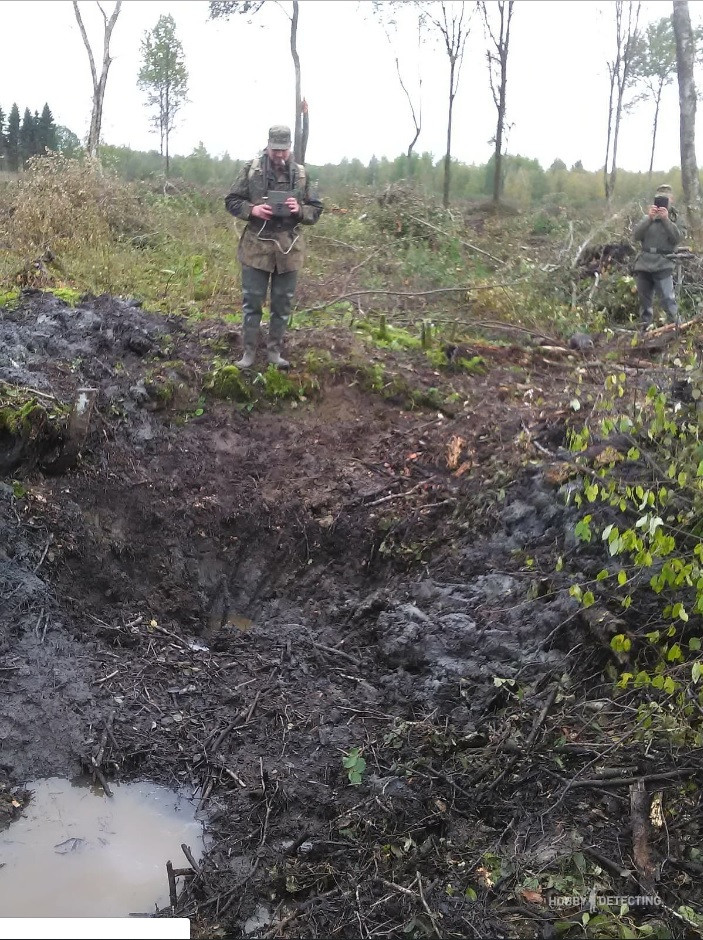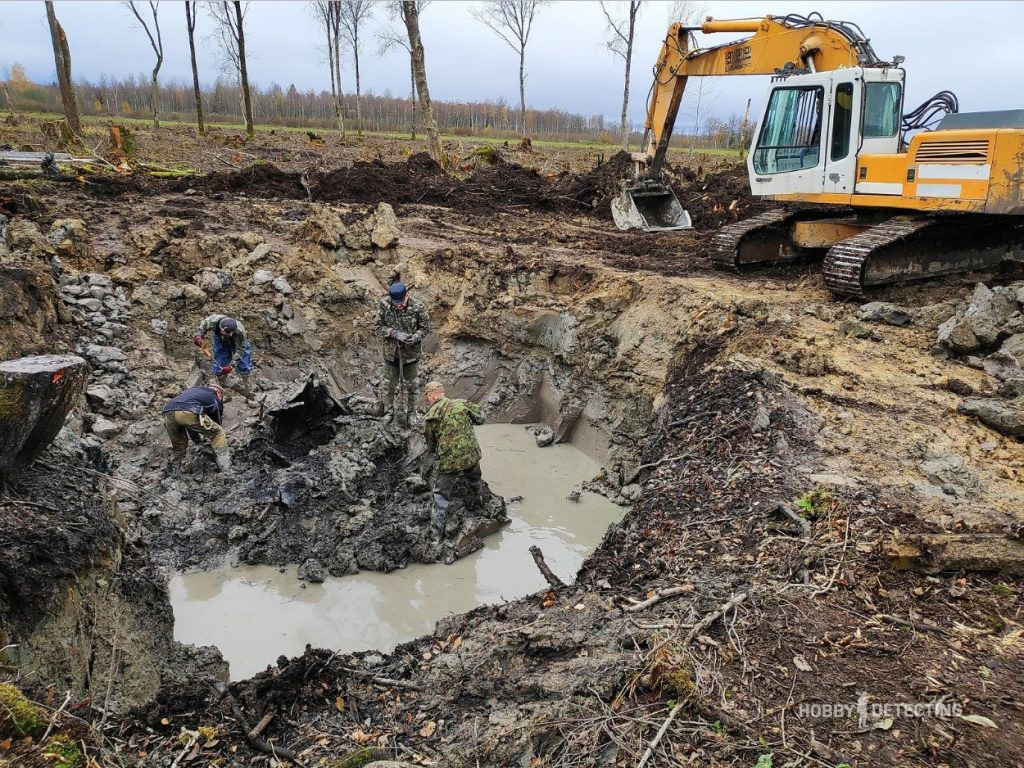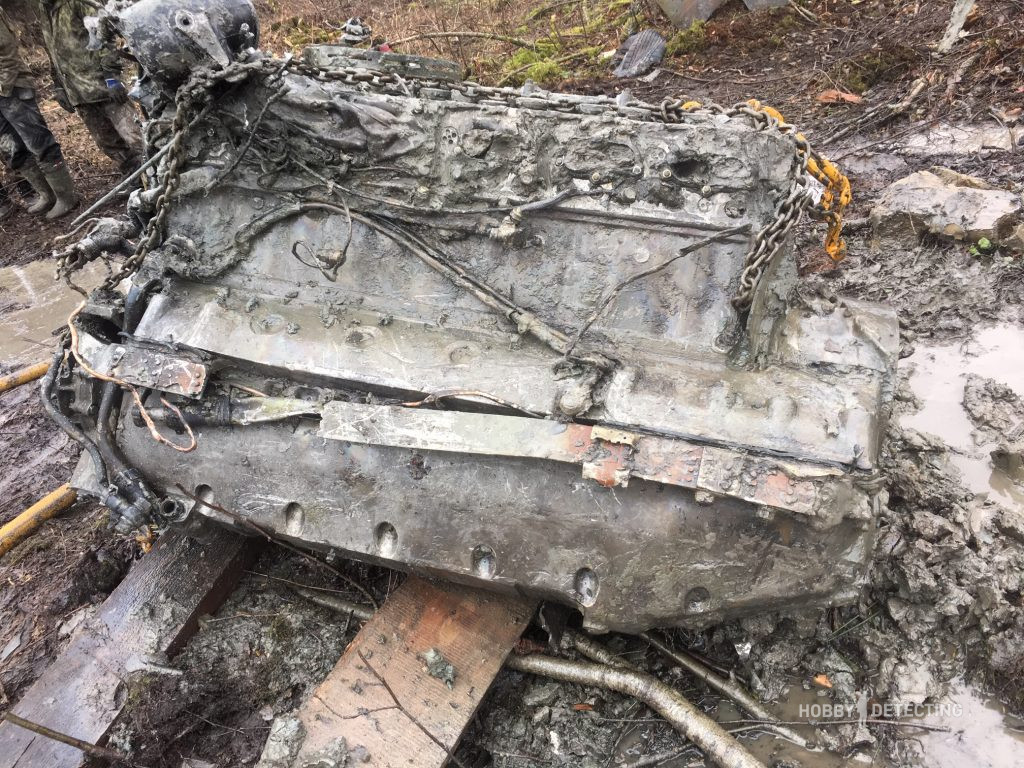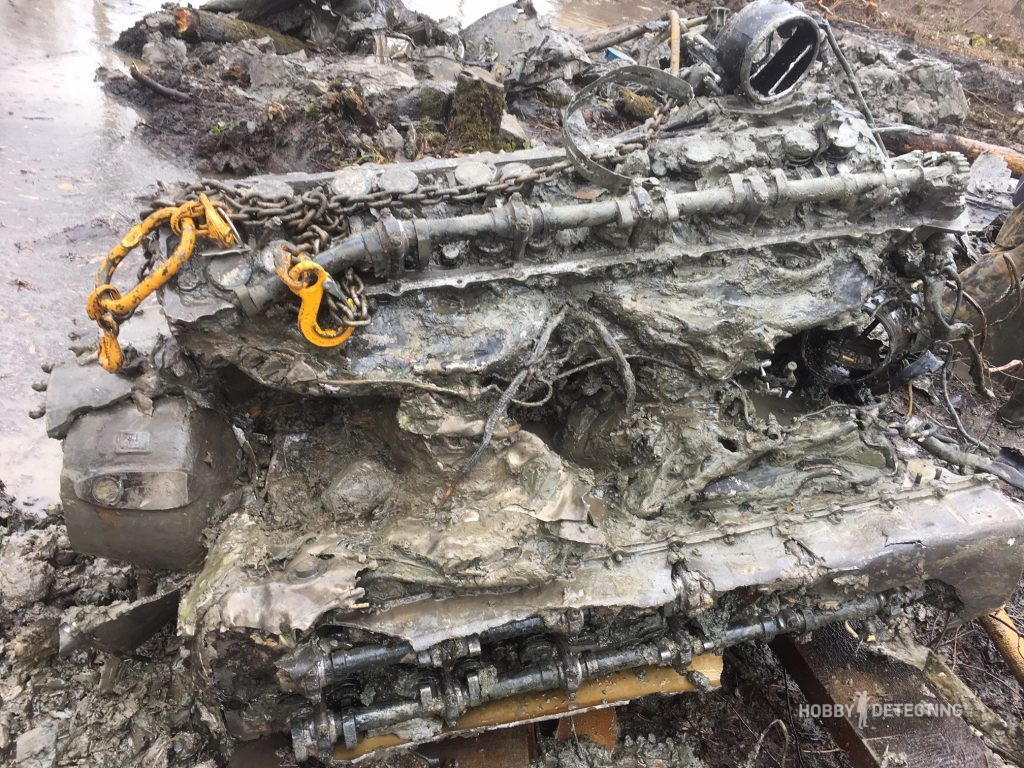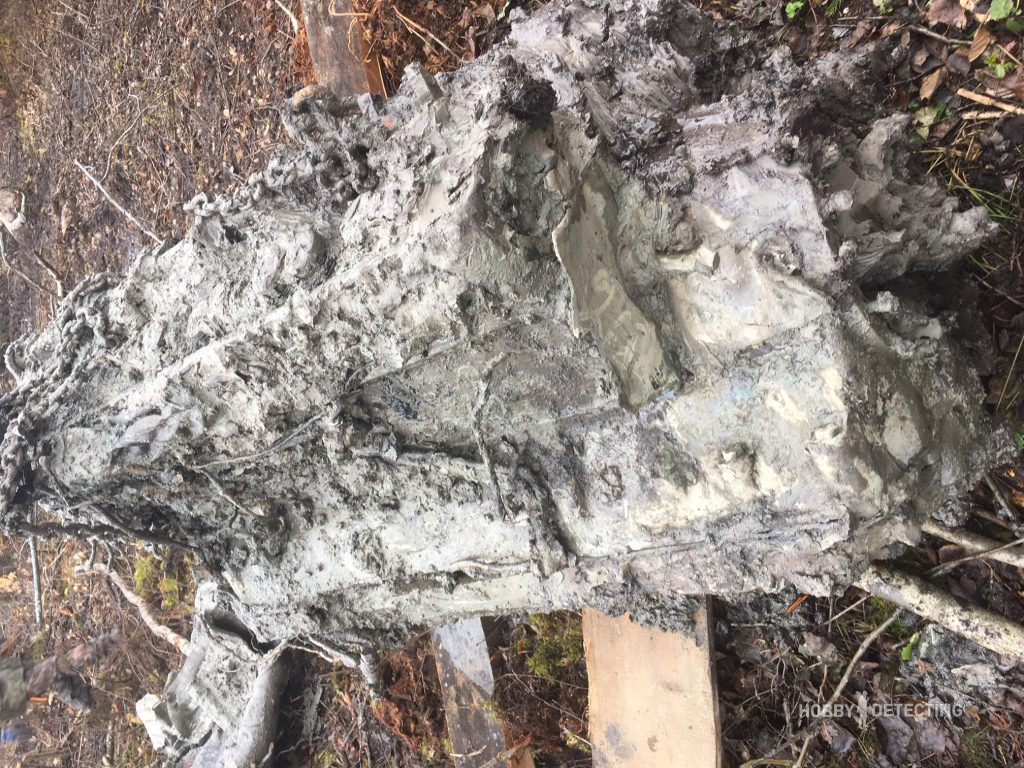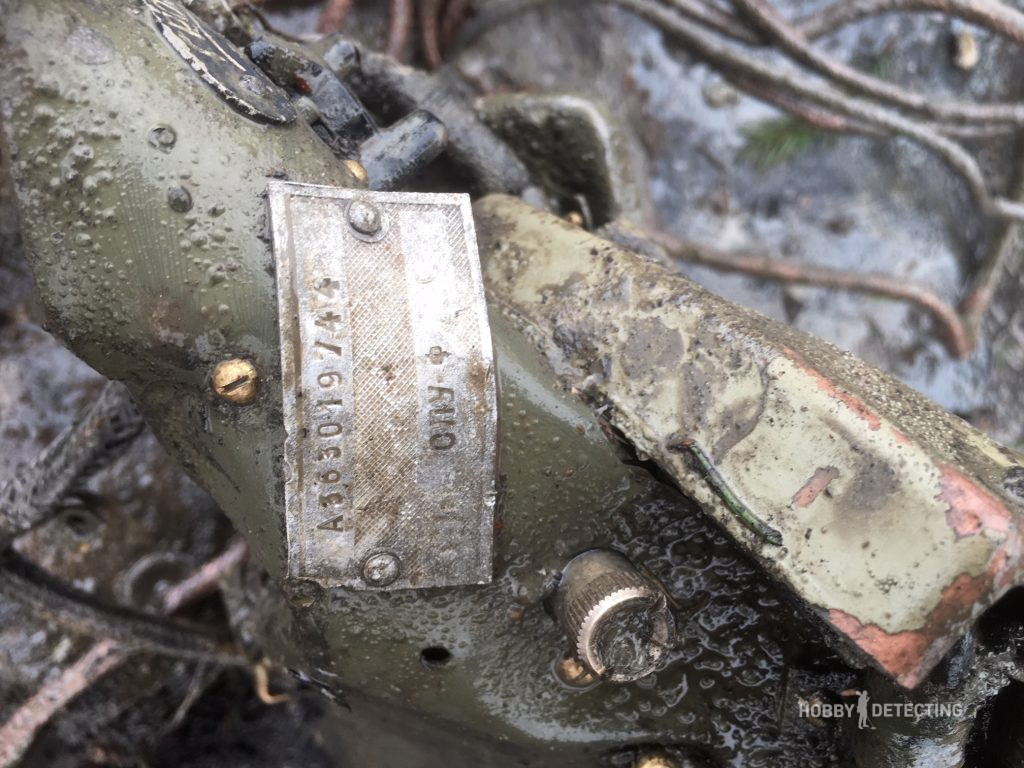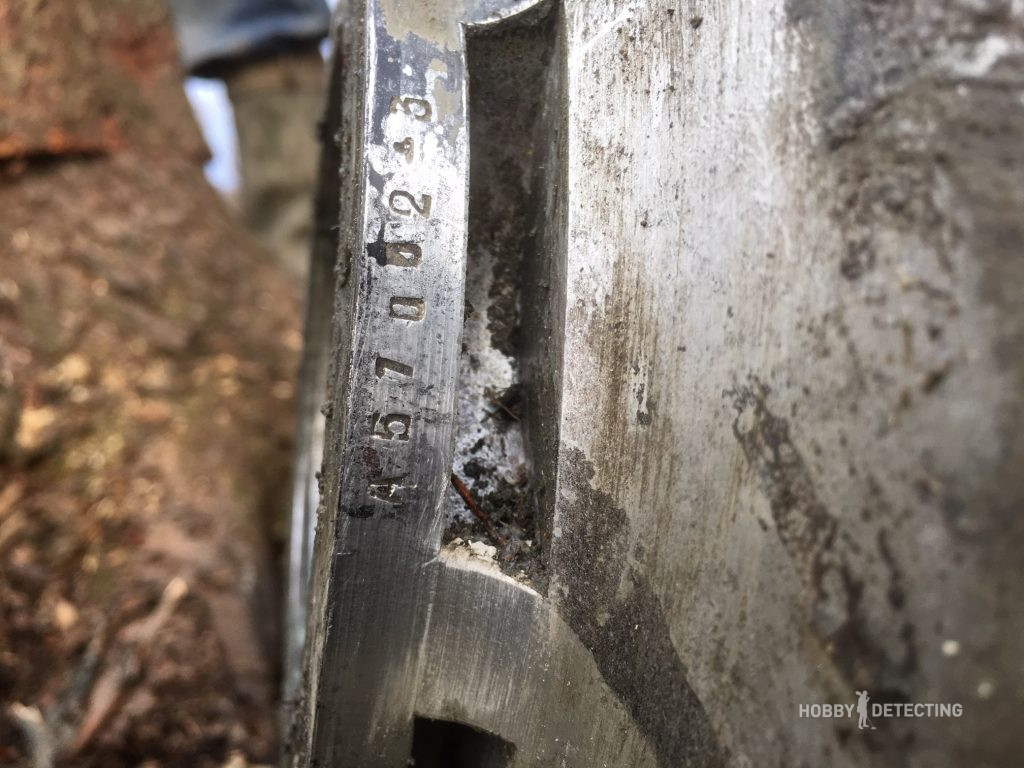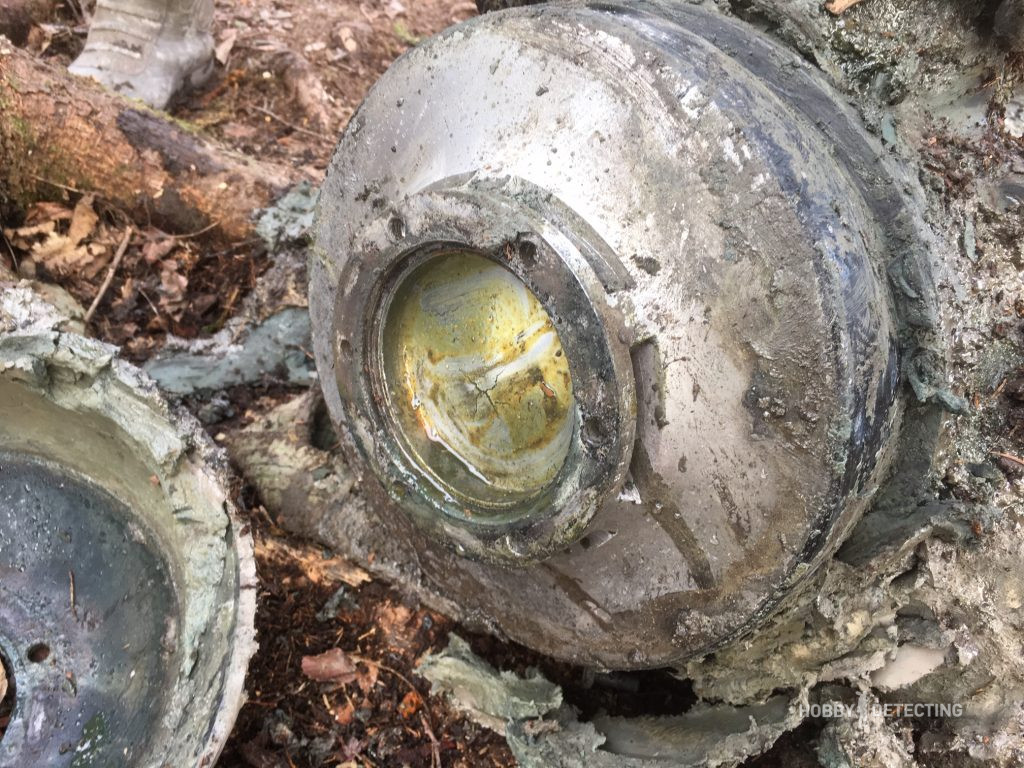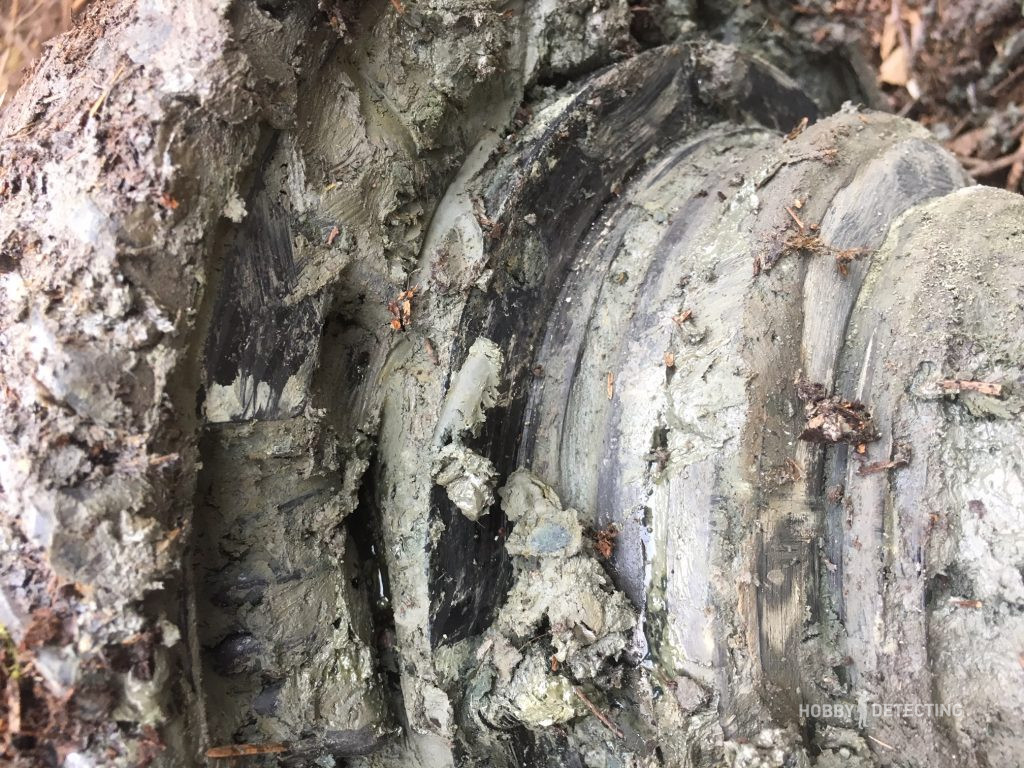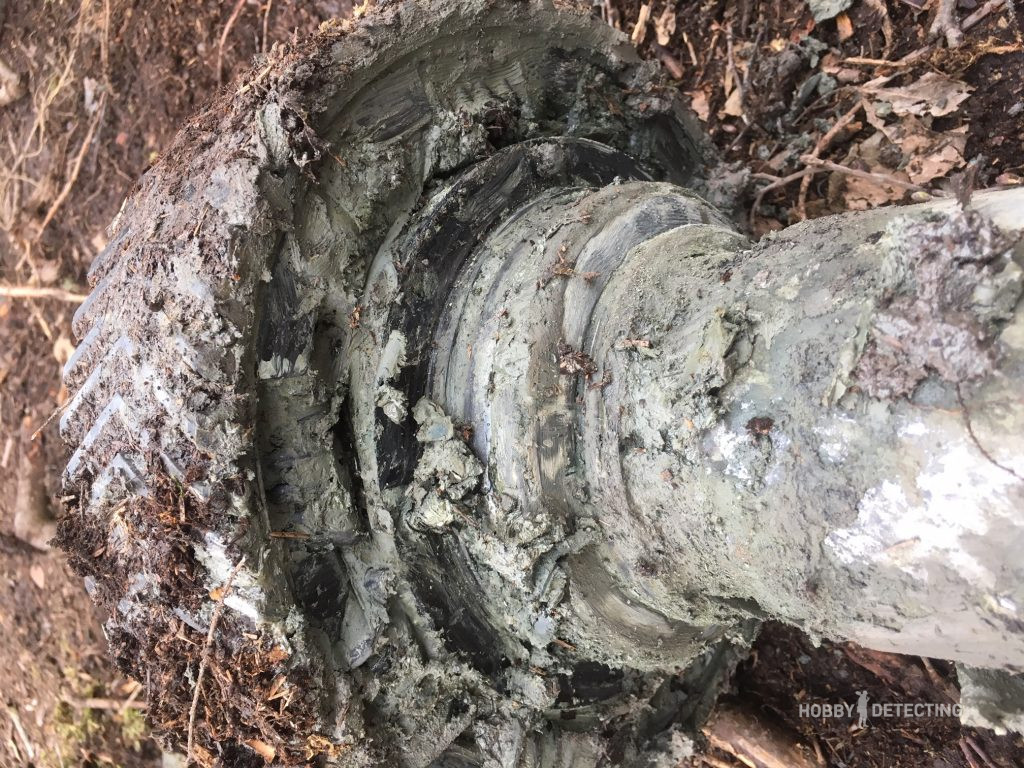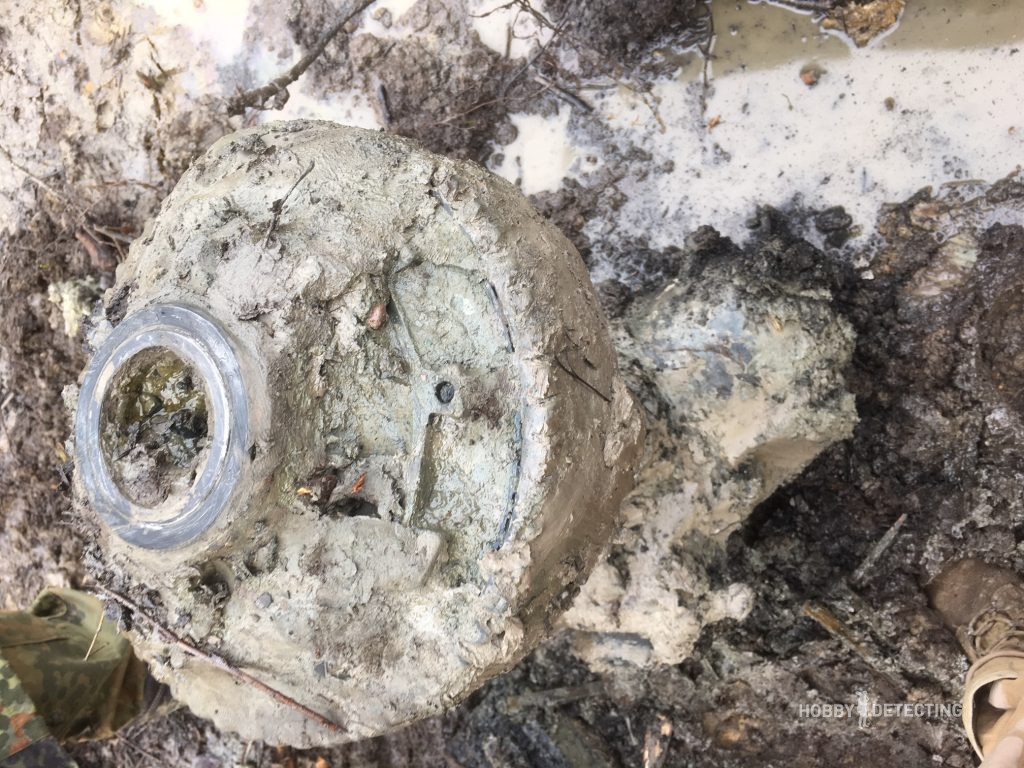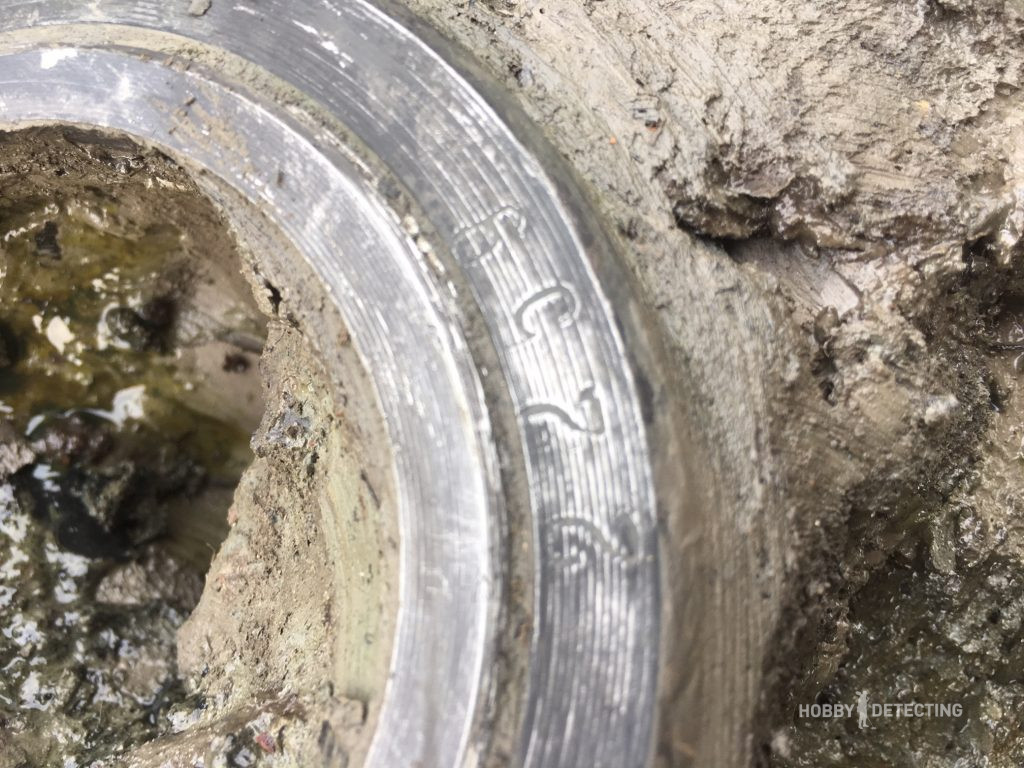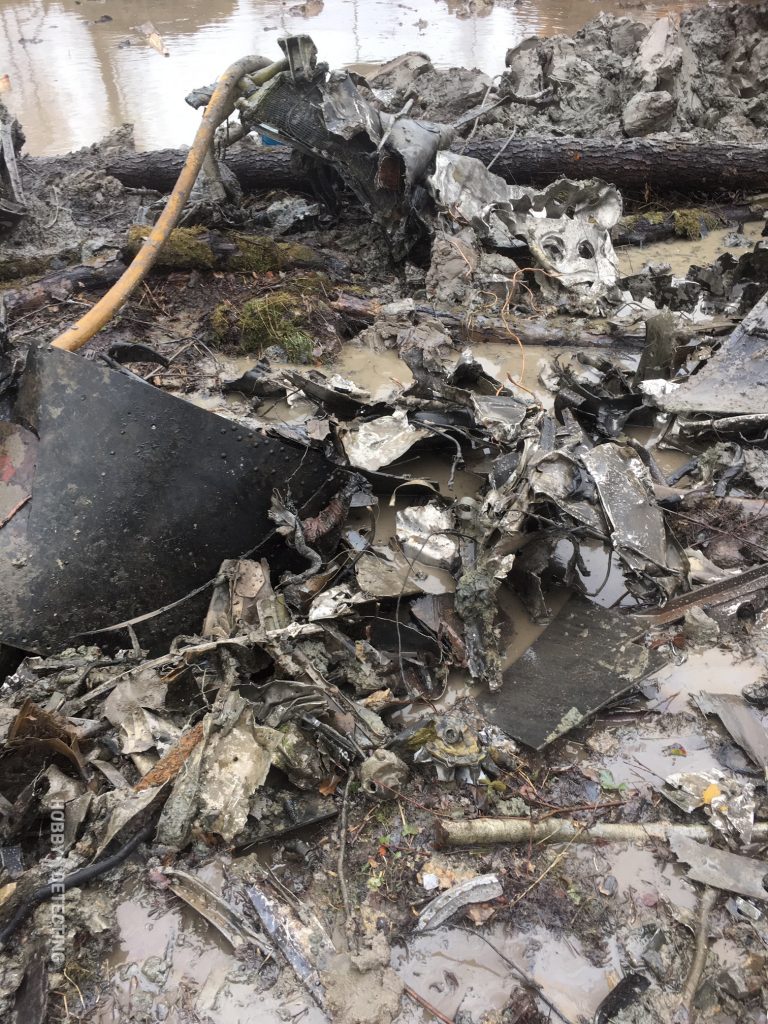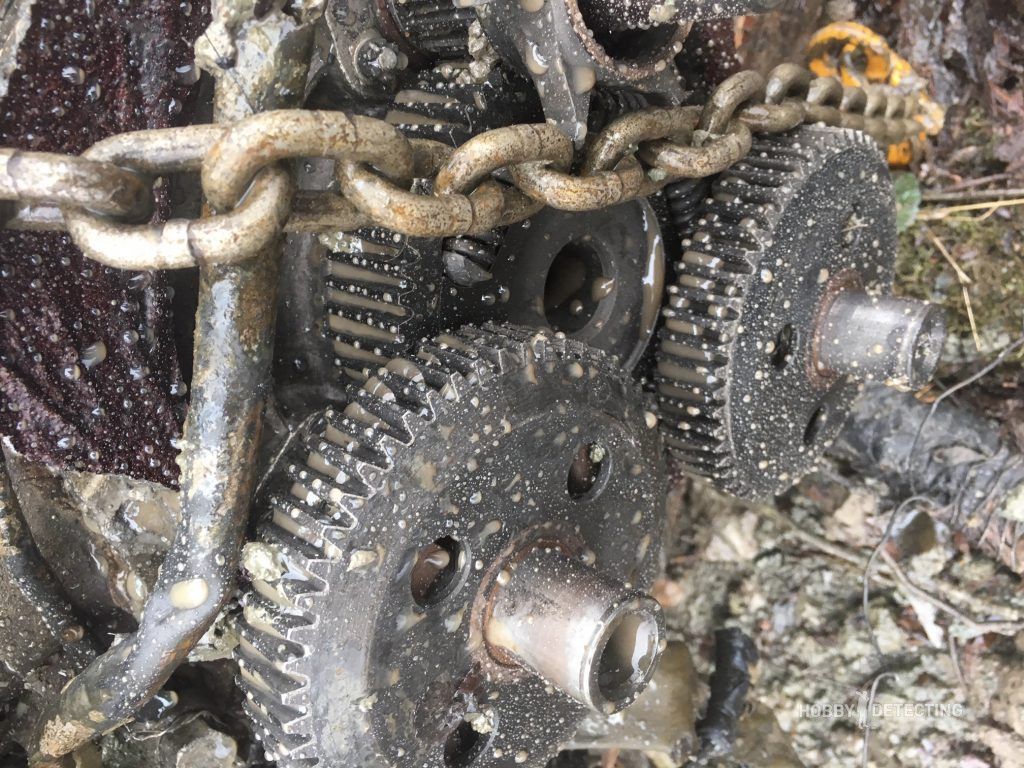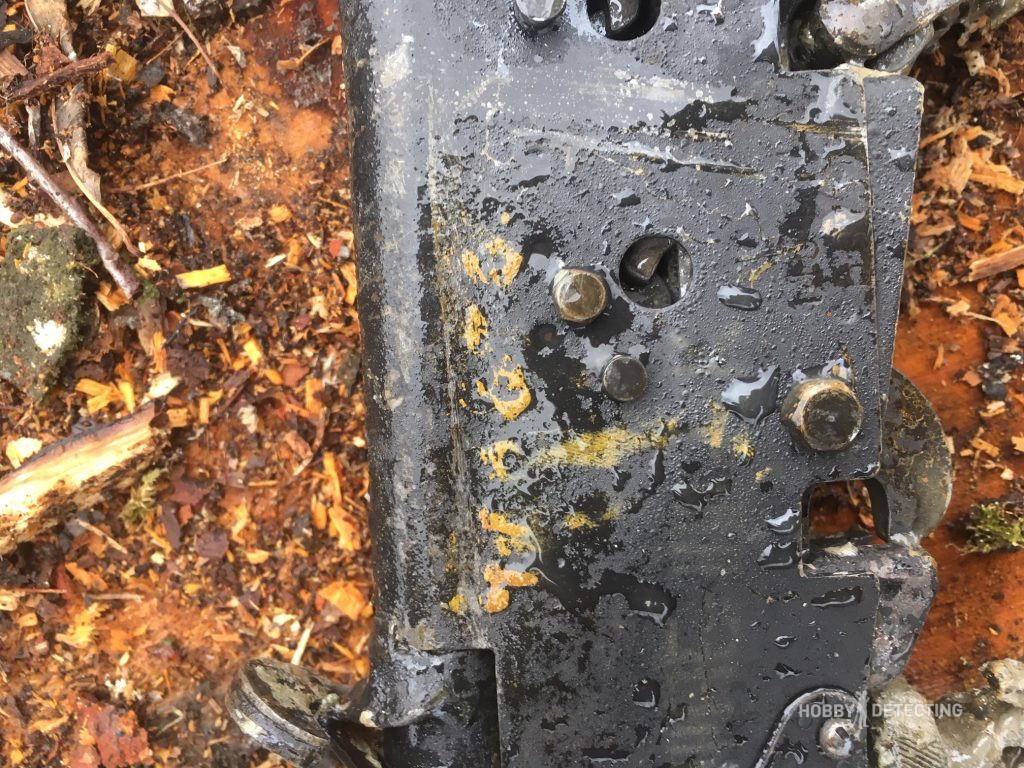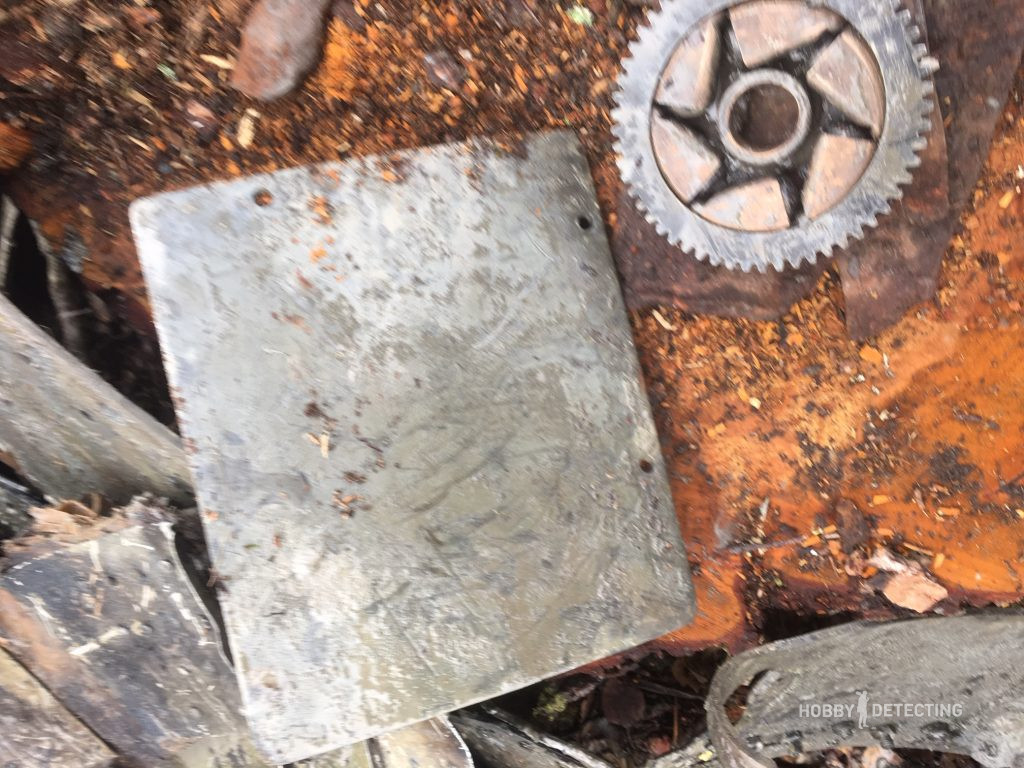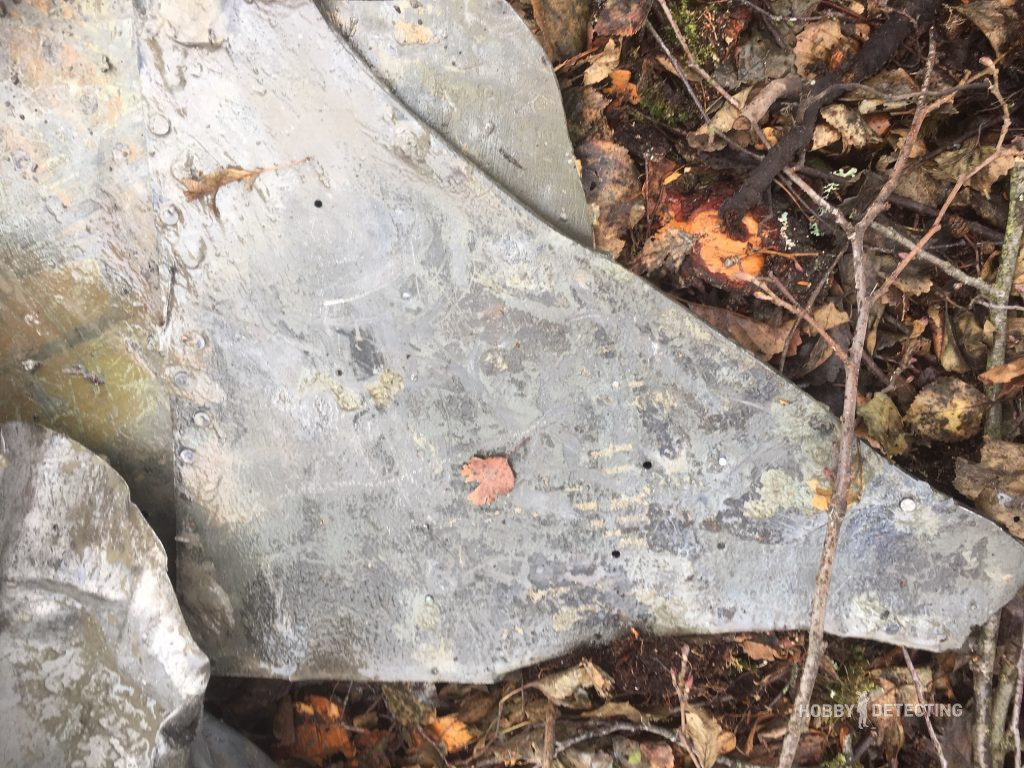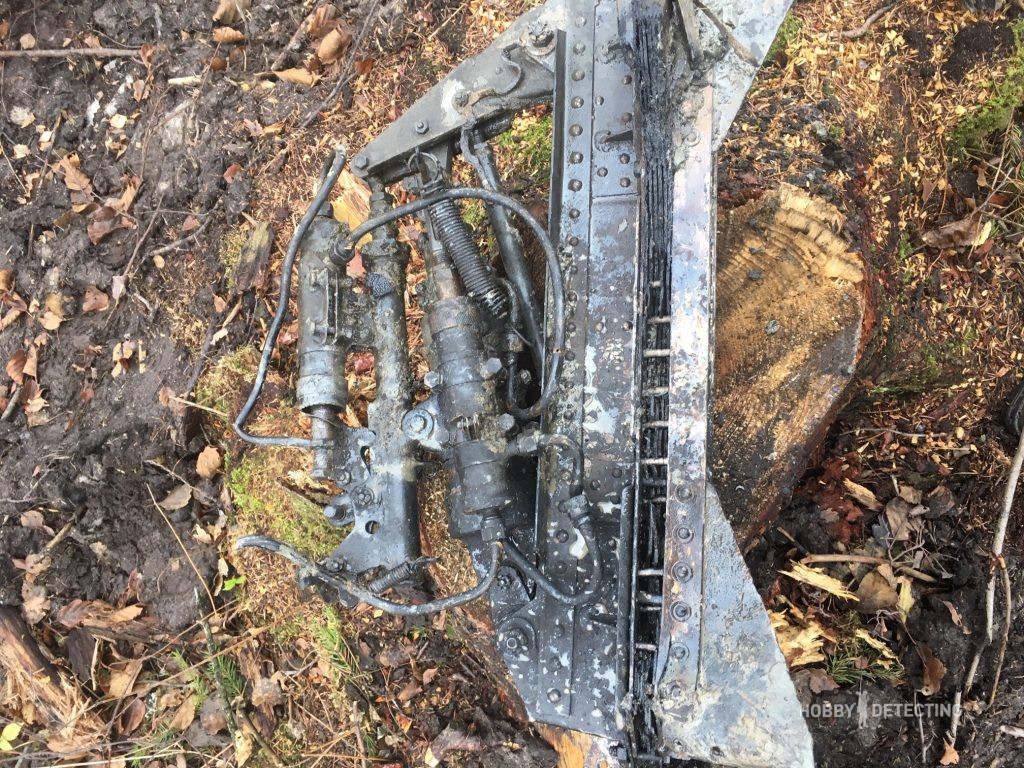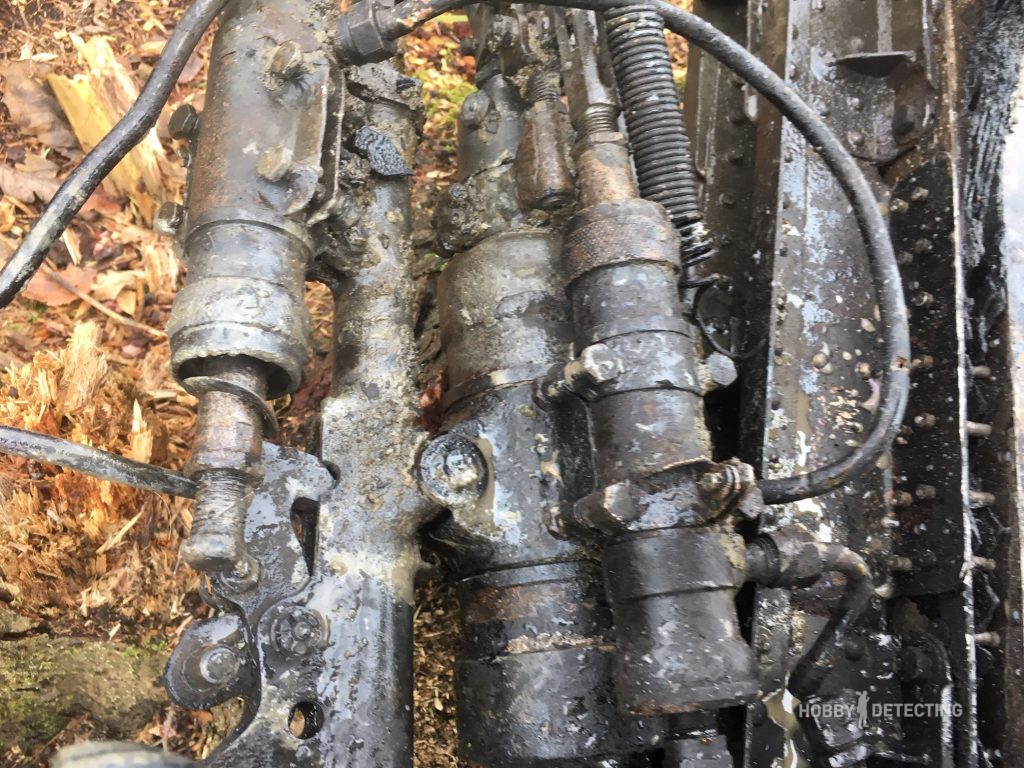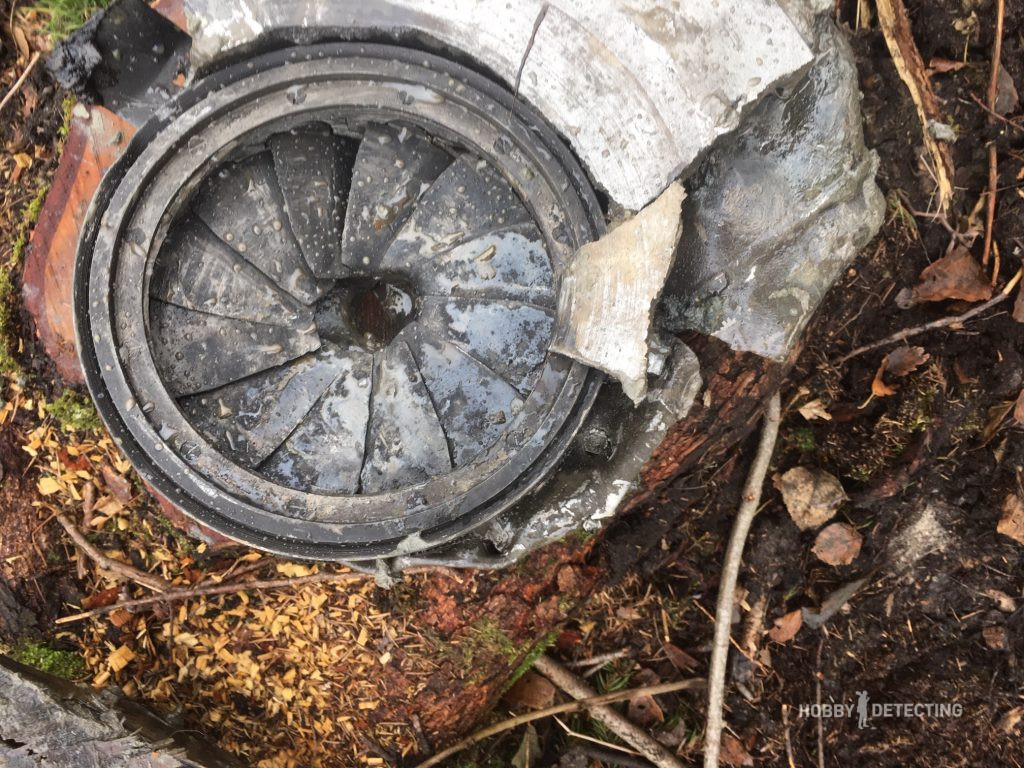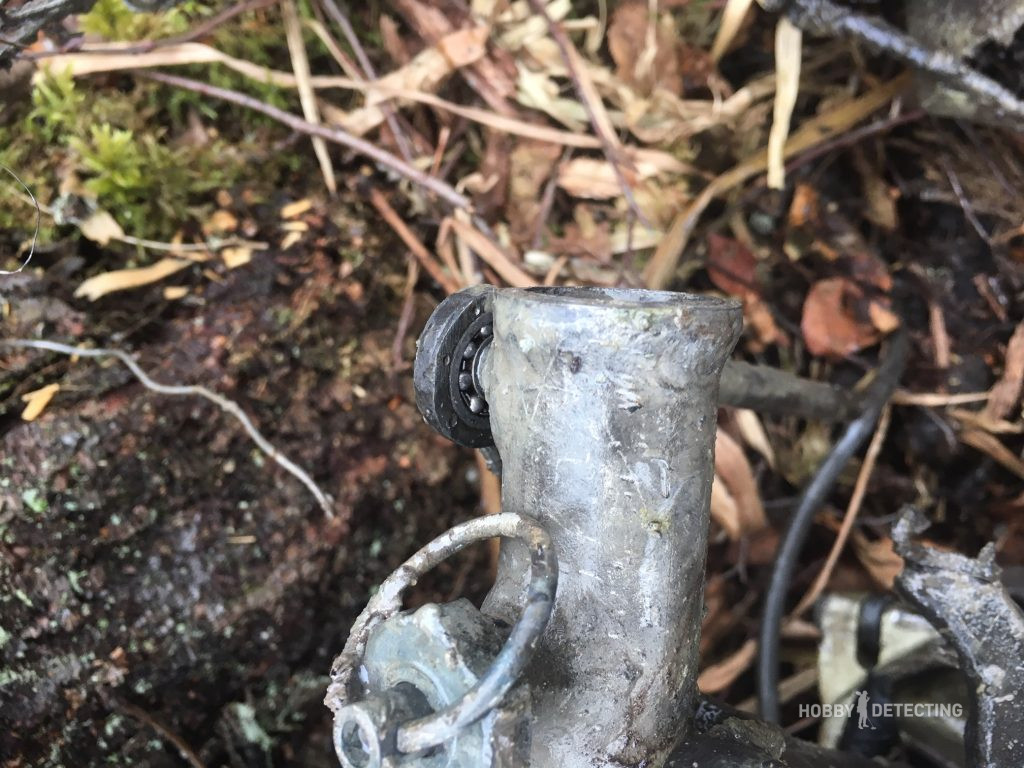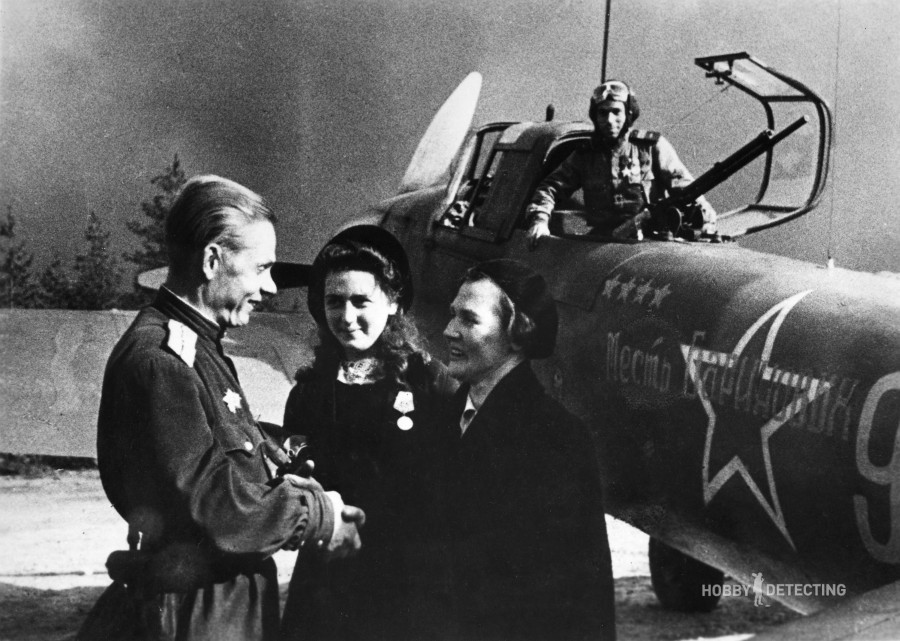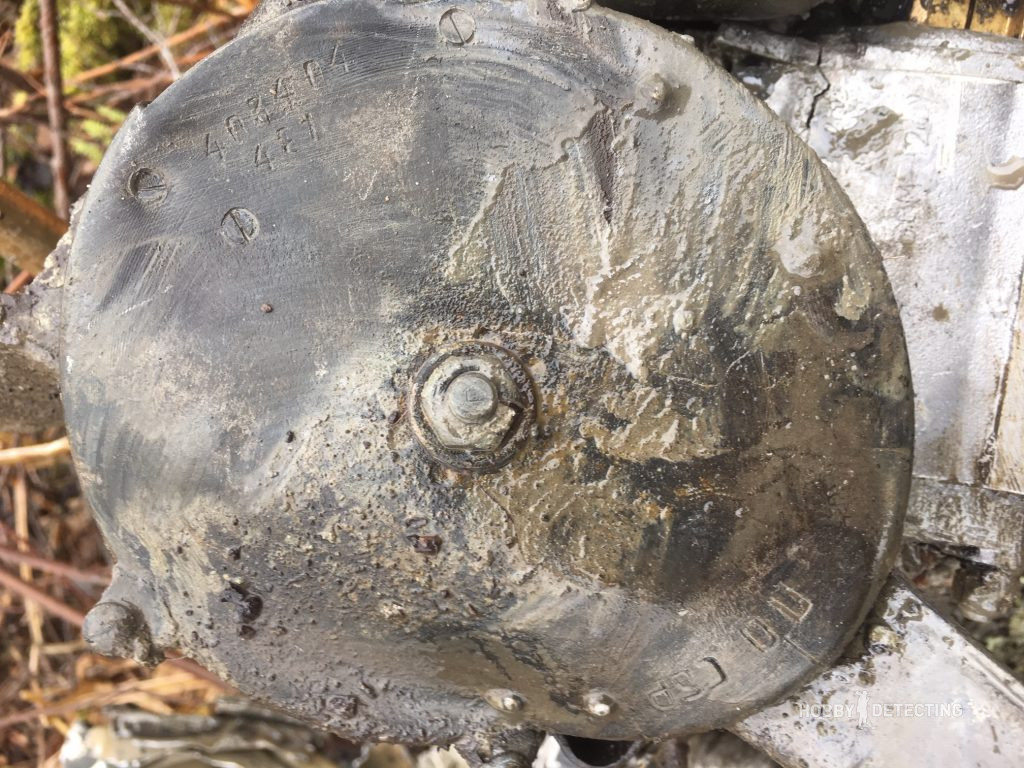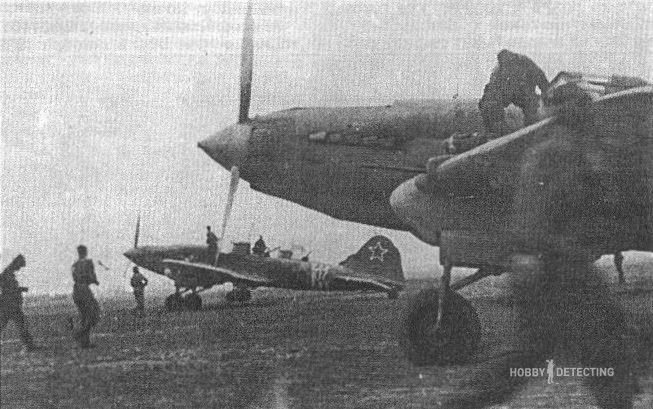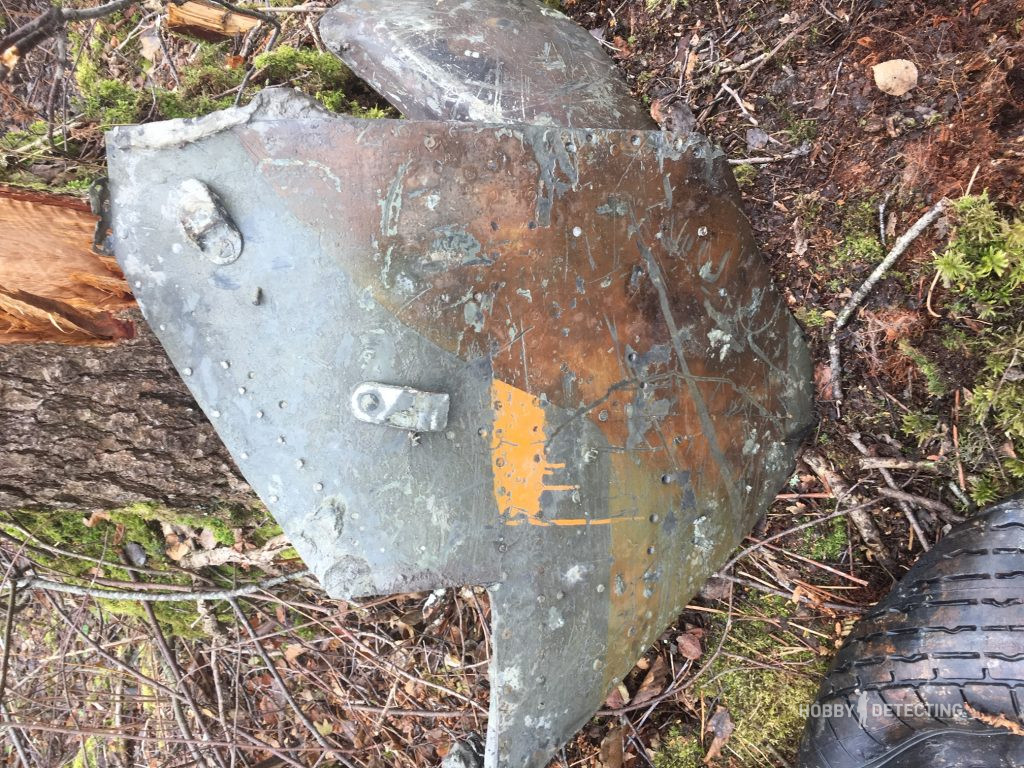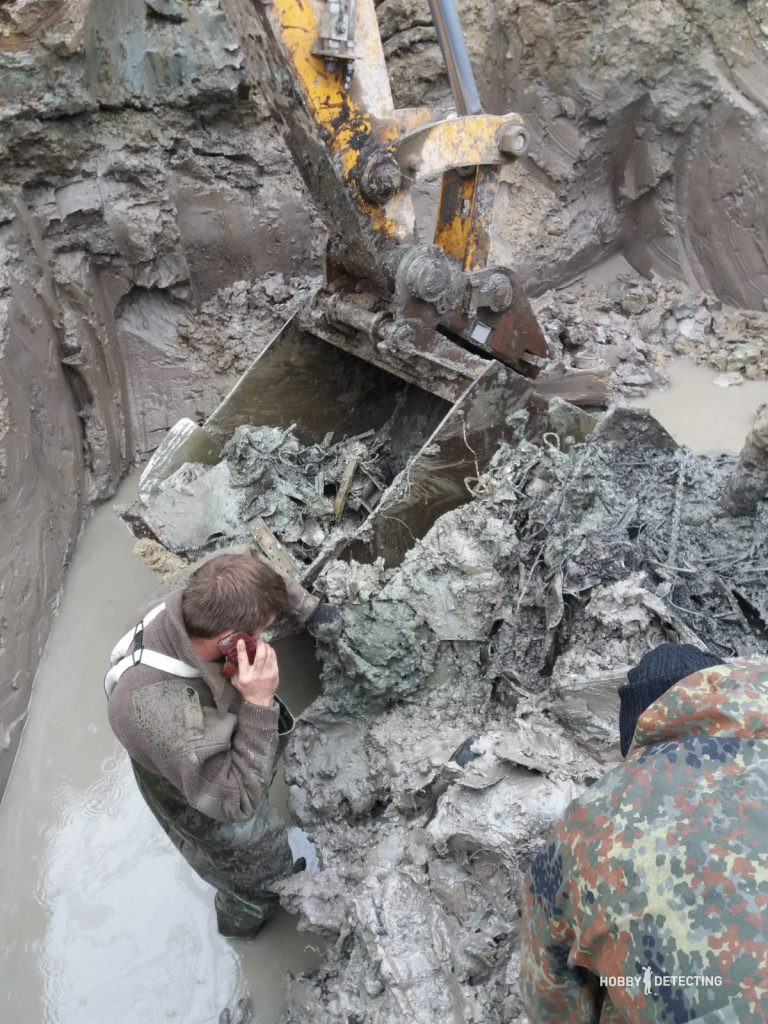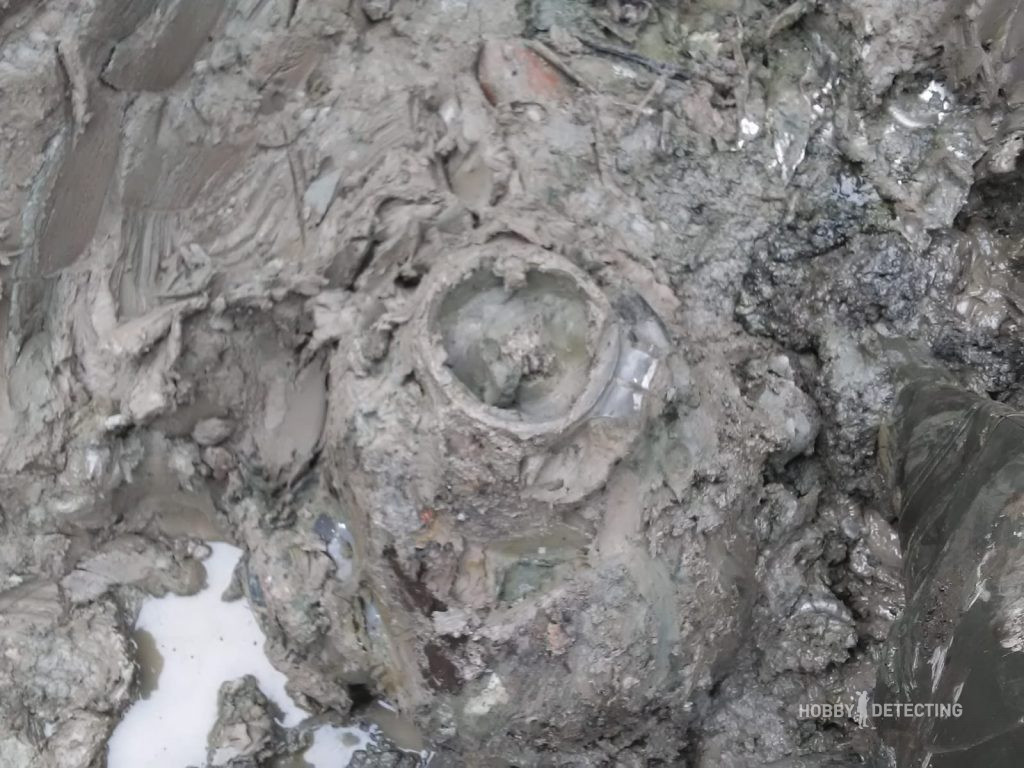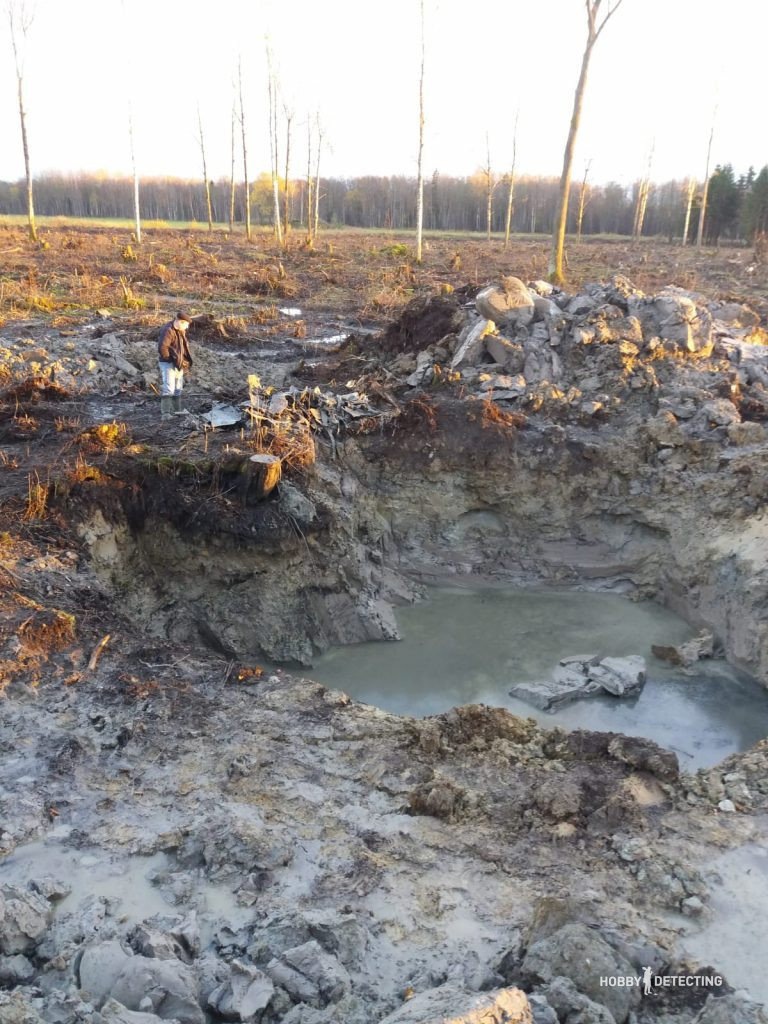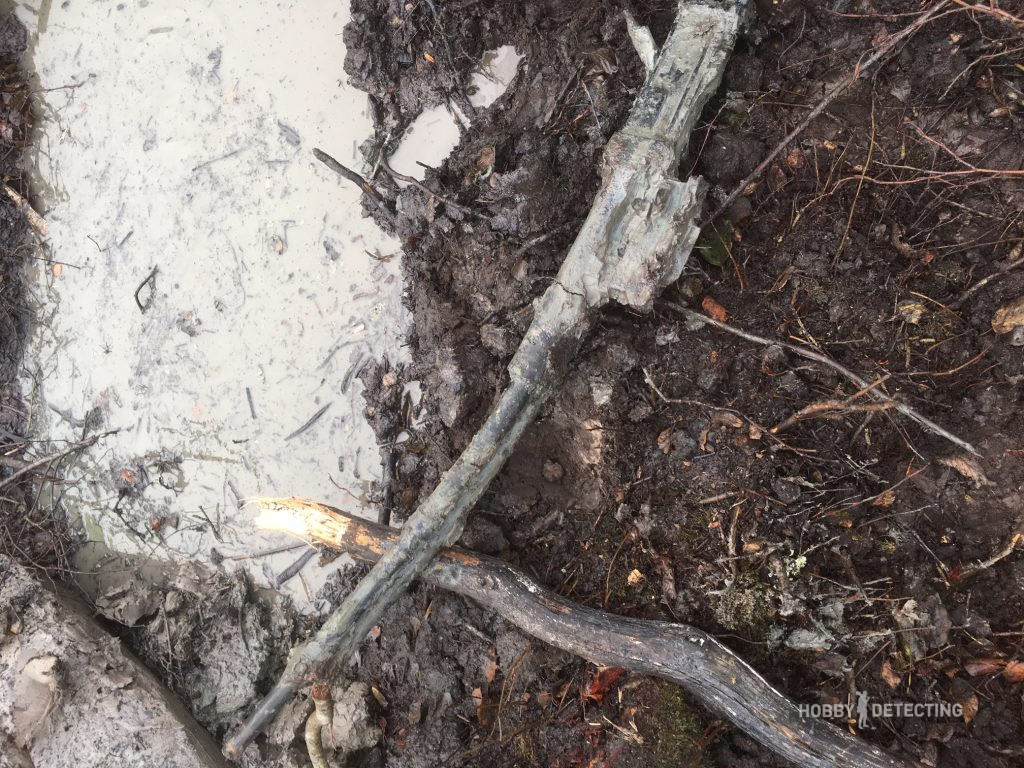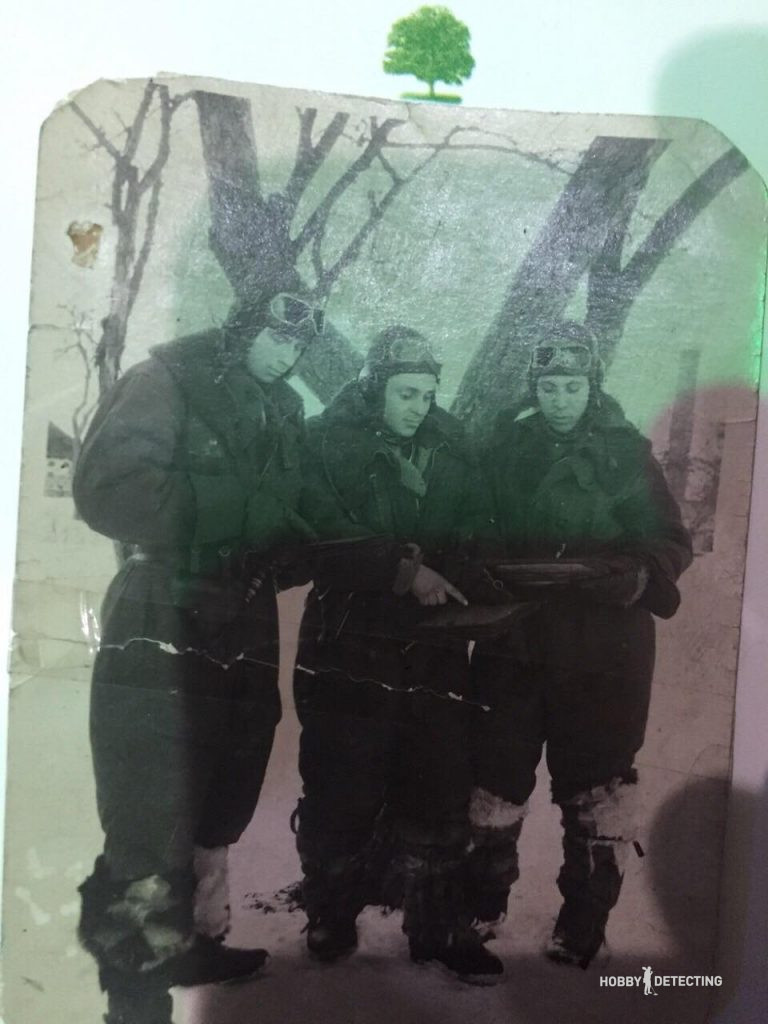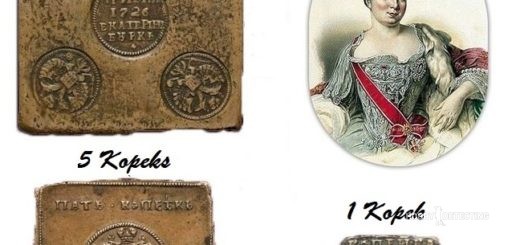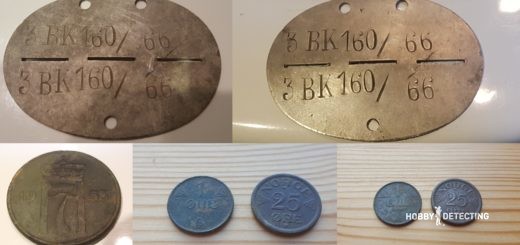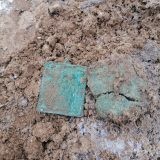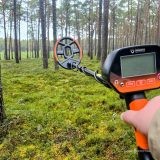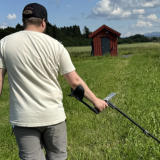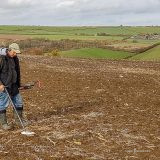Excavating The Attack Aircraft IL-2 Near Narva (October 2018) – Updated (Crew Fate+)
A lot of secrets are still held in the Narva land in Estonia, for example, as far as I know, in the vicinity of Narva, almost a couple hundred planes were shot down during the fighting in 1944. And if we take 1941 as an example, the number of planes fallen into the sea will be quite large.
And recently, one of those secrets were uncovered, when the Narva search company were looking for the burial place of private Nikolai Ilyichev who died in March 1944. According to his relatives, his grave was located in the Auvere station, for which fierce fighting took place in 1944.
Various self-made pieces of trench art from Wehrmacht soldiers made of aircraft-aluminum began to appear, suggesting a plane crashed in the area. With the help of a magnetometer, a large accumulation of metal was found in the ground, which indicated that something was deep in the ground.
The excavation was carried out by the search club “Kamerad” with the assistance of the NGO “Bastion”, “Memory” and volunteers from among the Narva veterans of the liquidation of the Chernobyl accident.
When a plane is shot down and it crashes into the ground at a speed of more than 400 km/h, it goes deep into the ground and the search teams can no longer do anything without an excavator!
The terrain in the Auvere area is marshy and the water from the pit needs to be pumped out with a pump.
The fallen plane was an attack aircraft IL-2. Recently, we have already written about an IL-2 in the north of Russia, but that was a rare modification – a single version of an early-war aircraft. In 1944, there were no such planes in the army, all were replaced by an improved modification with more serious weapons, a better motor, and two crew members. The plane was not all-metal, most of the fuselage was made of a wooden frame. At the site, the search teams managed to locate the aircraft engine and gearbox, as well as some elements and armored plates.
By the engine number, you can determine when the plane was released, in which part it served, and when it was lost. It turned out that the plane was released in May 1944, and the crash happened in the summer – June-July 1944.
The IL-2 attack aircraft was a really important machine of that war and no less famous than the T-34 tank, the Shpagin submachine gun, and the Mosin rifle. The most difficult missions were often given to this attack aircraft – to storm enemy columns, railway trains, and troops. Most often, everything happened under strong enemy air defense. Imagine that you are a pilot and you have to storm the station, and when approaching you are starting to take fire from everything that shoots – machine guns, air defense guns, small-caliber guns. A lot of small fragments scatter from each gap and tears, scratches, pierces your plane. And if the pilot of the IL-2 was somehow protected by armor plates, the rear gunner had absolutely no armor protection. They made an improvised armor protection, but it did not help either.
Already at the stage of perestroika, various myths went, as if the gunners on the IL-2 attack planes were all criminals and political prisoners, in the opinion of the mythmakers: “no sane person will get on a deliberate suicide mission – to get behind a machine gun without armor.” But these are all fairy tales and vile lies, in order to blacken the real heroes – the pilots and the gunners of the attack aircraft, people flew and knew what they were going. Mortality was high, but then this is war.
German attack aircraft and gunners didn’t live much longer than the Soviet ones, and on some planes not all crew members of the Luftwaffe could leave the plane – there were no bailout systems at that time, and the dead pilot/gunner simply blocked the way for a living radio pilot, this is the real problem with the release of technology and ill-conceived evacuation of the crew.
So this was a plane that lived only a few months. No trace of the crew was found and now it is necessary to know it’s fate – apparently, the pilot and the gunner jumped out of the plane when it fell, but what happened next?
What if they were captured or survived, were able to cross the front line and go to their own?
Another mystery of the story.
The aircraft was found with all the ammunition – shells were found with attached homemade stabilizers, which were used as bombs. What caused the creation of such ammunition is an open question because, in 1944, Soviet industry operated at full capacity and provided the front and aircraft with everything necessary. The standard attack aircraft did not only have bombs weighing 50 kilograms or less, 100 kilograms of bombs were also used (FAB-100), closer to the end of the war, since 1943, the PTBs were available – lightweight anti-tank bombs that covered the area, because to dive bomb at the target was not easy – the probability of hitting was less than 0.25.
Also, the IL-2 attack aircraft were armed with hanging rails with missiles installed on them – an analog of the famous “Katyusha” in artillery. Such a system was very effective in attacking columns and troops, the benefit was that they did not require great accuracy, but allowed to work effectively.
So if anyone can say what caused the choice of ammunition on this IL-2 – tell me in the comments, otherwise, the choice of weapons looks strange.
This plane flew at the disposal of the troops from the sea (Gulf), it is likely that there it was shot down, and fell already near the station.
A little about the accuracy of the bombing from the attack aircraft IL-2:
The results of the bombing of the IL-2 in field conditions with horizontal flight on marked targets on the pilot’s armored visor and engine hood, with a single dropping of bombs and a series of 4 FAB-50 bombs at a flight speed of 330-360 km/h showed that the probability of hitting one bomb per lane 20×100 m from a height of 50 m averaged 0.035 and 0.08 for single and serial bombing, respectively. With an increase in the height of the bombing to 200 m, the probability of hitting one bomb in the same lane decreased to 0.023 and 0.043, respectively.
In real combat conditions, the accuracy of bombing in a similar way was much worse, since targets on the battlefield (tanks, firing points, etc.) were dispersed over a large area, and often well camouflaged and, as a result, difficult to detect from the air.
In theory, in the archives of the Ministry of Defense, there should be an act of writing off this aircraft, which will give more information about the crew and the air unit to which it belonged.
During the battles of Narva, the following assault air regiments operated: the 448th Assault Aviation Regiment and the 943rd Assault Aviation Regiment.
The 448th Assault Aviation Regiment was formed in 1941 and acted on the Volkhov Front, and then, from 1942, on the Leningrad Front. During the war, the regiment made more than 3,000 successful combat missions, inflicted tremendous damage to the enemy: destroyed more than 6,450 soldiers and officers, suppressed more than 1,300 artillery guns, mortars and other firing points, destroyed more than 400 bunkers and dugouts, destroyed more than 690 vehicles, staff buses, gasoline trucks and carts with cargo, 23 tanks, 246 railway cars and 8 steam locomotives, sank 38 deminers and barges, blew off 9 crossings, blew up more than 115 warehouses with ammunition and fuel, created 41 explosions, wrecked and blew up 18 railway echelons and destroyed 95 enemy aircraft at airfields and in air battles.
The 943rd Assault Aviation Regiment was formed in 1942, fought as part of the Leningrad Front, and reached Berlin in May 1945. As part of this regiment the Hero of the Soviet Union, Georgy Mikhailovich Parshin, fought twice on the personal plane “Revenge of the Barinovs” presented to him, which was built with the money of Praskovya Vasilyevna Barinova and her daughter Zhenya. Before the war, the family of Praskovya Vasilievna Barinova consisted of six people: a husband, three daughters and a son. In 1942, in the besieged Leningrad, Praskovia Vasilievna’s husband and her younger, five-year-old daughter died. The son of Victor, who fought in the army, went missing in battles for the defense of the city.
On January 27, 1944, on the day of the festive salute in honor of the complete liberation of Leningrad from the blockade, the mother and daughter of the Barinovs (both of them worked at the 27th Leningrad clinic: the mother was a nurse, the daughter Zhenya was a nurse) gave most of their family’s money to the government and asked the government to build an airplane with this money, calling it “The Barinov Revenge”.
On June 1, 1944, in the presence of the Barinovs, the new Il-2 attack aircraft was solemnly handed over to the best pilot of the 943rd Assault Aviation Regiment of the 13th Air Army of the Leningrad Front, Captain Georgy Mikhailovich Parshin. On the left side of the fuselage was the inscription “Revenge of the Barinovs”, on the right – “For Leningrad”. On this plane, Parshin made more than a hundred successful trips, took part in the liberation of Estonia, Latvia, Lithuania, in the storming of Berlin, shot down 10 aircrafts, destroyed a large number of equipment and manpower of the enemy. He was twice awarded the title Hero of the Soviet Union – 08/19/1944 and 04/19/1945.
Parshin was killed on March 13, 1956, during an IL-28 test flight. P.V. Barinova died in 1974, her daughter Eugenia – in 1972.
I hope that in the future we will know which regiment this aircraft belonged to. Maybe the pilot and gunner of this aircraft survived and reached Berlin together with the hero Parshin?
In this post, we have quite a lot of photographs of the wreckage, but probably many of the readers may not know how the military issue attack aircraft IL-2 looked like with a place for a gunner-radio operator? I managed to find photos of the attack aircraft 943 cap of the Air Force KA during the battles on the Leningrad front.
And now a modern drawing of the IL-2 attack aircraft in a variant of coloring, which Captain Parshin G.M. had:
Three white rings around the tail are the hallmark of the air regiment in 277 shad.
Most likely, it can be said that the IL-2 found by the Narva search engines was painted like this aircraft, but whether there were three white rings around the tail on it — we will find out later, after the results of the archive search.
So far, according to debris scattered in the ground, it is difficult to say how the plane was painted.
It was not an easy job to excavate the plane. The people must stand knee-deep in groundwater and dig, sift the ground because there is always a chance at the crash site to find the dead pilots.
And even a small thing can be missed in this pile of earth and metal.
In this case, since the plane was without a crew on board, the work was done, the weapon was transferred to the relevant authorities for deactivation and will subsequently be exhibited for display at the local museum, most likely it will be a military museum in Sinimäe.
At the left and in the middle there is a 23-mm aircraft launcher WYa, on the right – a 12.7-mm aviation Universal Berezina machine gun. As you can see, when the machine guns fell, it strongly bent and curved, it is terrible to even imagine such a blow to the ground.
When the plane crashed, the machine gun was deformed, but with the help of such machine guns, thousands of shooters on the IL-2 saved the life of both the aircraft and its pilots. The gunners were specially trained because the ammunition had to be saved and the entire formation of attack aircraft during the attack of enemy fighters had to not only keep the line but also act in one because with a volley of all shooters from the assault formation, enemy fighters could be well-battered. Those who were lagging behind became the easy targets of the German fighters, hence the simple conclusion – it’s always easier to defend together than one by one, and our attack crews knew this firsthand.
A beautiful sunset over a place where more than 70 years in the thickness of the earth, there once lay the now-raised IL-2 attack aircraft.
Updated – the fate of the crew
So, thanks to the number obtained on the engine of the raised aircraft, it was possible to establish the course of events and the fate of the crew.
On July 24, 1944, the IL-2 attack aircraft took off for a combat mission but was attacked by the German FW190 fighters. One fighter was shot down by the fire of the radio operator Kashnikov, Vladimir Filippovich, the crew commander, Deineko Peter Ivanovich, but when the attack was repeated, the attack aircraft with the crew of Deineko — Kashnikov was shot down. The plane was burning and the pilot with the gunner-radio operator were able to miraculously get out of the attack aircraft and jump out with a parachute. Unfortunately, Junior Lieutenant Petr Ivanovich Deineko was killed (at the time of his death he was only 22 years old), and the shooter, having 17 bullet wounds to the forearm and right hand, landed and was captured.
For July 24, 1944, there were two losses: – the crew of the junior lieutenant Strelnikov – senior sergeant Yakovlev – they know for sure that their plane and remains were found in 2002, documents were found and the number of the aircraft was set to 304721 and engine No. 4509311 was installed.
The IL-2 No. 304788 with the AM engine -38 No. 257672 did not return, the crew of Deineko-Kashnikov was lost. – the crew of the junior lieutenant Deineko Peter Ivanovich – senior sergeant Kashnikov Vladimir Filippovich
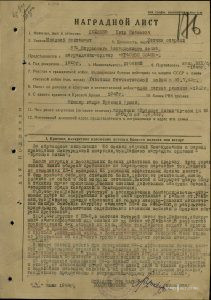
Peter Ivanovich Deineko, despite his age, was by that time a knight of the Order of the Red Star. He had not received any awards before, Russian, born in 1923. In the ranks of the Red Army since 1940, and participated in the war since July 1943.
The commander of the aircraft – junior Lieutenant Deineko Peter Ivanovich was buried in a mass grave at the memorial in Sinimäe.
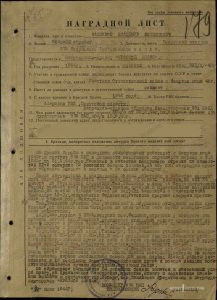
Kashnikov Vladimir Filippovich, was born in 1923, senior sergeant. In his 20 years, he already had more than 52 combat missions in the role of a gunner-radio operator, for which he was awarded the Order of the Red Banner. He was Russian, in the army since 1942, participates in war since February 1943.
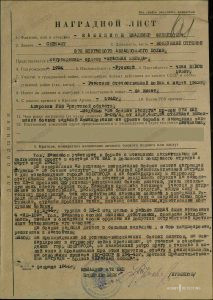
He was awarded the medal “For Military Merit” in February 1944.
In captivity, Vladimir Filippych was in the Salaspils camp, from where he later escaped. Went through the war, lived in Irkutsk, worked for a long time in the nuclear industry in the city of Angarsk, in Siberia. He died in 2012.
From left to right- Kashnikov, Perepelitsa, Korneev
Korneyev Matvey Sergeevich, p. 1921, Mordovian ASSR, Tengushevsky district, p. Dudnikovo, gunner. In the army from 09/01/42. He served as a junior sergeant. From February 1943, he served in the position of air gunner of the IL-2 aircraft. He flew in the crew of the squadron commander Lieutenant Platonov. By July 1944, an Il-2 made 136 combat missions on the Volkhov front and the Karelian Isthmus. It participated in 18 air battles, repeatedly repelled attacks by enemy fighters. 23.06.44 in a group battle it shot down a Me-109, which crashed into a forest in the Repetilli area. He was awarded the Order of the Red Banner, the Red Star, medals “For Courage”, “For Military Merit” and others.
Good luck to all you out there, and may you all have a peaceful sky above your heads!

